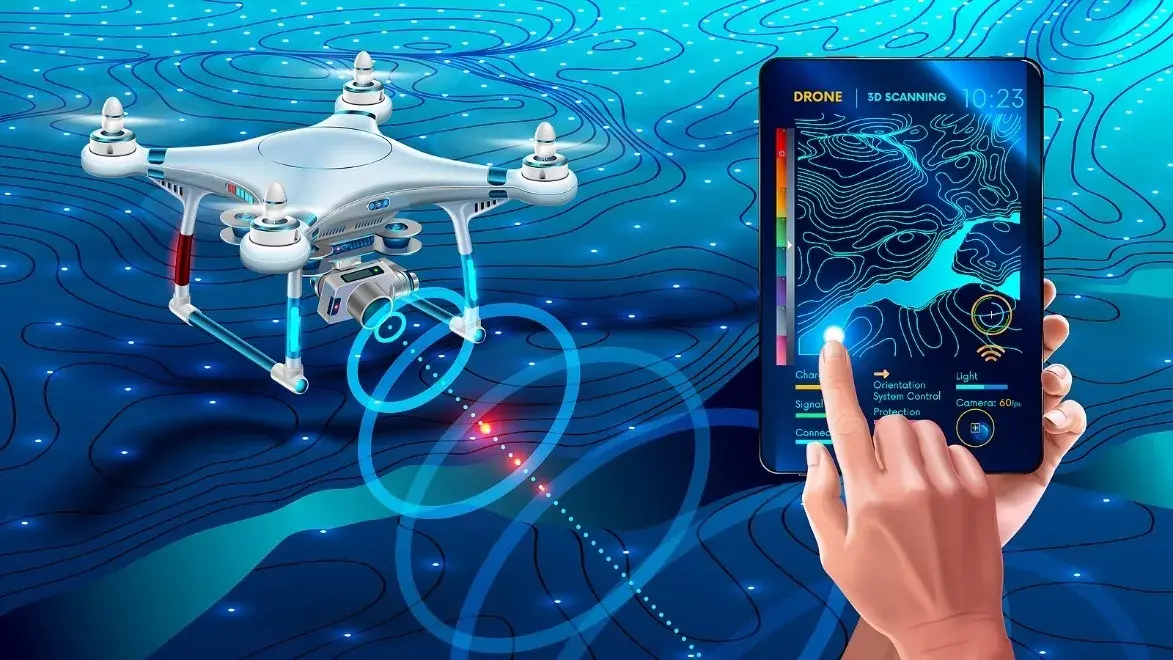
Overview
In the past few years, Design Technologies Drone have undergone significant advancements, reshaping industries ranging from agriculture to military sectors. As we move into 2024, grasping these technological developments is essential for businesses, enthusiasts, and policymakers. This article delves into the most recent innovations, key components, and emerging trends in drone design technologies, emphasizing their importance and influence across various fields.
Historical Development of Drone Design
Early UAV Concepts and Prototypes
Unmanned Aerial Vehicles (UAVs) boast a storied history, originating in the early 20th century when they were primarily employed for military training and reconnaissance purposes. The development of drones has been marked by significant milestones, from the first radio-controlled aircraft to the sophisticated UAVs we see today.
Milestones in Drone Technology Evolution
- Military Applications: The 1990s saw the deployment of drones like the Predator, which paved the way for modern military UAVs. These drones provided real-time intelligence and surveillance, fundamentally changing combat strategies.
- Civilian Uses: In the early 2000s, drones began to penetrate civilian markets. Applications expanded to aerial photography, environmental monitoring, and agricultural assessments, democratizing access to aerial data.
Key Figures in Drone Technology Advancement
Pioneers such as Elon Musk and Jeff Bezos have significantly influenced the drone landscape, particularly through innovations in logistics and delivery systems. Their vision has propelled advancements in design technologies, making drones an integral part of commercial operations.
Core Components of Drone Design

Airframe and Materials
The airframe serves as the foundational structure of the drone, significantly influencing its performance, durability, and overall weight.
- Lightweight Materials: Innovations in materials such as carbon fiber and advanced plastics have reduced weight without compromising strength, leading to improved flight efficiency.
- Design Considerations: Aerodynamic designs are essential to minimize drag, enhancing flight times and payload capacities.
Propulsion Systems
Drones rely on robust propulsion systems for effective operation.
- Types of Motors: The shift towards brushless motors has revolutionized drone performance, offering higher efficiency and reliability.
- Battery Technologies: Lithium Polymer (LiPo) batteries remain dominant, but emerging technologies like solid-state batteries are set to extend flight times and enhance safety.
Avionics and Control Systems
Contemporary drones come fitted with advanced avionics systems that facilitate accurate control and navigation.
- Flight Controllers: Advanced flight controllers incorporate GPS, gyroscopes, and accelerometers, facilitating stable flight in various conditions.
- Navigation Technologies: Innovations in GNSS (Global Navigation Satellite Systems) have improved positioning accuracy, vital for autonomous operations.
Payload Integration
Payloads determine a drone’s functionality, with applications ranging from photography to scientific research.
- Cameras and Imaging Technologies: The integration of high-resolution cameras and multispectral sensors has expanded drones’ capabilities, enabling detailed analysis in agriculture and environmental science.
- Specialized Sensors: Drones are now equipped with LiDAR and thermal sensors, allowing for precision mapping and monitoring in diverse applications.
Advances in Drone Design Technologies
Innovations in Autonomous Flight
The integration of artificial intelligence (AI) and machine learning has revolutionized autonomous flight.
- Machine Learning: Drones can now adapt their flight paths based on real-time data, improving efficiency and safety.
- Real-time Data Processing: Enhanced onboard computing power allows drones to process information instantly, making split-second decisions during flight.
Swarming Technology and Collaborative Drones
Swarming technology enables multiple drones to operate collaboratively, mimicking natural swarms found in nature.
- Applications: This technology is utilized in agricultural monitoring, search and rescue missions, and environmental assessments, enhancing data collection and operational efficiency.
Developments in Design Software and Simulation Tools
Modern design tools have transformed how drones are developed.
- CAD Applications: Advanced Computer-Aided Design (CAD) software allows for intricate modeling, reducing the time and cost of development.
- Virtual Reality for Prototyping: Virtual reality environments are now used for testing and refining drone designs, allowing engineers to visualize and modify concepts before physical production.
Regulatory and Safety Considerations

Overview of Global Regulations
As drone usage expands, so do regulatory frameworks governing their operation.
- FAA Regulations: In the U.S., the Federal Aviation Administration (FAA) continues to refine regulations, focusing on safety and integration into national airspace.
- EASA Guidelines: The European Union Aviation Safety Agency (EASA) has established comprehensive guidelines to ensure safe drone operations across Europe.
Safety Technologies and Fail-Safes
Prioritizing the safety of drone operations is essential.
- Redundant Systems: Modern drones often include backup systems to ensure safe landings in case of component failure.
- Emergency Protocols: Innovations in emergency response systems allow drones to execute automated landing procedures when issues arise.
Ethical Implications of Drone Design and Use
As drones become more integrated into society, ethical considerations must be addressed.
- Privacy Concerns: The use of drones for surveillance raises significant privacy issues, necessitating clear guidelines and public discourse.
- Environmental Impact: Designers must consider the ecological footprint of drone production and operations, aiming for sustainable practices.
Case Studies in Drone Design Technologies
Military Applications
Drones like the MQ-9 Reaper exemplify the advanced capabilities of modern military UAVs, providing critical support in combat operations and intelligence gathering.
Commercial Applications
Companies like Amazon and Wing are pioneering the use of drones for package delivery, showcasing their potential to revolutionize logistics and last-mile delivery systems.
Agricultural Innovations
Precision farming drones equipped with multispectral sensors help farmers monitor crop health, optimize inputs, and enhance yield predictions, leading to more sustainable agricultural practices.
Environmental Monitoring
Wildlife trackers and disaster responders are increasingly using drones to provide real-time data that supports conservation efforts and emergency management.
For more insightful content, visit Future Trendz
Future Trends in Drone Design Technologies

Emerging Technologies
Looking ahead, various trends are set to influence the evolution of drone design technologies.
- Hydrogen Fuel Cells: These offer longer flight times and reduced environmental impact compared to traditional batteries.
- Solar Drones: Innovations in solar technology may enable drones to harness solar energy for extended operations, especially in remote areas.
Potential Market Growth and Economic Impact
Experts expect the global drone market to reach $100 billion by 2025, as demand increases across sectors like agriculture, logistics, and public safety.
Societal Implications and Public Perception
Public perception of drones is evolving, influenced by their applications in enhancing safety and efficiency. However, addressing privacy concerns remains critical for widespread acceptance.
FAQs
1. What are the latest advancements in drone design for 2024? Recent advancements include autonomous flight technologies, AI integration, and enhanced materials for lighter and more durable drones.
2. How do drones impact agriculture? Drones help monitor crop health, optimize resource usage, and increase yields through precision farming techniques.
3. What regulations govern drone usage? Regulations vary by country, with bodies like the FAA in the U.S. and EASA in Europe establishing guidelines for safe operation.
4. Are drones environmentally friendly? While drones can reduce carbon footprints in logistics, their production and battery disposal present environmental challenges that need addressing.
5. What is swarming technology in drones? Swarming technology allows multiple drones to operate together, improving efficiency in tasks like data collection and search-and-rescue missions.
This comprehensive exploration of drone design technologies not only informs but also sets a foundation for future developments and discussions in this rapidly evolving field.
Conclusion
The advancements in drone design technologies in 2024 signify a pivotal shift in how we approach various industries. From agricultural innovations to military applications, drones are becoming indispensable tools. As technology continues to evolve, understanding the implications and potential of these flying machines will be crucial for leveraging their benefits while addressing ethical and regulatory challenges.
Learn more about emerging trends at Future Trendz.







